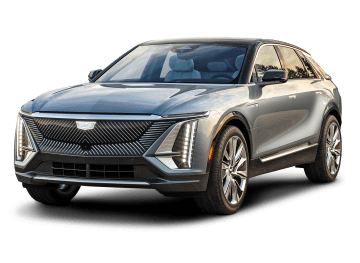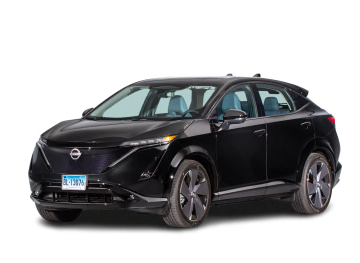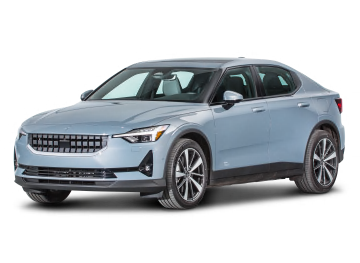Electric Vehicles That Can Go More Than 250 Miles on a Charge
All of these EVs can be used multiple days in a row without needing to be constantly recharged

By Jon Linkov
With more electric vehicles arriving each model year—and the available cars, SUVs, and trucks becoming more mainstream—buyers who look at more affordable options aren’t necessarily saddled with a short driving range. You actually don’t have to pay a big luxury-car price for an EV that allows you to drive farther between charges. In fact, many of the EVs from luxury automakers have lower range estimates.
And on the horizon, there are dozens of fully electric vehicles set to debut by the end of 2024, including models from Chevrolet, Honda, Kia, Lexus, and Nissan.
Each of the models below can travel more than 250 miles on a single charge, according to their latest ratings by the Environmental Protection Agency (EPA). That means owners don’t need to recharge them every day, and with planning, these vehicles can even be used for longer trips. And knowing that cold weather can reduce range, these have particular appeal for shoppers in northern states.
All of these models have CR’s Green Choice designation, which highlights the vehicles with the cleanest emissions.
The models below are listed alphabetically by automaker and are broken into three buckets: more than 400 miles of range, 300 to 350 miles of range, and 250 to 300 miles of range. While all of them are available to purchase, we haven’t tested every one. That’s why some don’t have an Overall Score. Be aware that the Overall Scores change over time as new information, such as reliability data and the addition or removal of safety features, becomes available. The model pages always reflect our latest ratings. Models that have been announced but don’t yet have an EPA rating aren’t included, such as the Chevrolet Equinox EV and Volkswagen ID.7.
If you’re a Consumer Reports member, the list below is available to you. CR members can also have full access to the results of our Annual Auto Surveys; first-drive reviews of the newest cars, SUVs, and trucks; and our full reviews and exclusive ratings for each vehicle we buy and test.
If you’re not a CR member, click below to join and see the full list of vehicles that can go more than 250 miles on a charge. As a CR member, you also get access to our exclusive ratings and reviews for every product that we buy and test, including cars, grills, smartphones, and flat-screen TVs.
Sign up for CR’s Cars email newsletter to be notified when we post our latest road tests.
400-Mile Range or More

The luxurious Air electric sedan is the first model to be offered by Lucid Motors, a Silicon Valley startup. Both single- and dual-motor powertrains are available, which give the Air rear- or all-wheel drive. Depending on wheel size and the number of motors, the Air has EPA-rated ranges of 384 miles, 410 miles, 425 miles, 446 miles, 469 miles, and 516 miles. The 900-volt electric system enables rapid charging capable of taking on 300 miles of range in just 20 minutes. The roomy cabin is distinguished by a massive, curved 34-inch floating display ahead of the driver and a center console screen that can retract. The suite of active safety features is augmented by lidar, an advanced laser-based sensor system. Read more about the Lucid Air.

The sleek, fully electric Model S has impressive range capabilities, with EPA ratings between 272 and 405 miles, with the top range better than nearly every other non-Tesla EV except Lucid. Charge times are long compared with fueling a gas car, but the ability to use Tesla’s supercharging network in public places is a major plus. Performance is exceptional, with quiet and thrilling acceleration, pinpoint handling, and a firm yet comfortable ride. The hatchback design aids versatility, and the frunk, or front trunk, is a bonus. But the controls are extremely unintuitive because Tesla has eliminated the steering-wheel stalks for the turn signals and wipers. Many common functions are performed through the yoke, which is a small, half steering wheel that brings serious compromises in usability and maneuverability.
300- to 400-Mile Range

The i7 xDrive60 is BMW’s EV flagship and looks almost exactly like its gasoline-powered 7 Series counterpart. But it’s underpinned by a large battery pack under the floor and driven by two electric motors, one in front and one in the rear, in place of the inline six-cylinder and V8 engines that have long been staples in BMW’s lineup. The electric motors will generate a combined 536 hp, and the i7 has an estimated range of between 308 and 318 miles.

BMW’s iX SUV has 516 hp and employs two motors to give it all-wheel-drive capability. The driving range is estimated by the EPA to be between 305 and 324 miles, depending on the iX’s tire size. Using a DC fast-charging station can add 90 miles of charge in 10 minutes, while charging from empty on 240 volts will take 11 hours, which is similar to many EVs. According to BMW, it can sprint from 0 to 60 mph in 4.4 seconds. The iX glides silently with very quick acceleration and a super-comfortable ride. The airy interior is modern and uncluttered, but the controls aren’t the most intuitive.

Cadillac’s first electric-only model will soon start to trickle into dealerships in rear-wheel-drive configurations, with AWD versions due to arrive soon. While the Lyriq’s overall dimensions are similar to those of the XT6 midsized SUV, the EV is lower, almost like a wagon. The 340-hp rear-drive model has a 100-kWh battery with an EPA-estimated 312 miles of range. The all-wheel-drive version will have an estimated 500 hp. The Lyriq offers the latest version of the Super Cruise active driver assistance system.

Looking something like a cousin of the Range Rover Evoque, the Fisker Ocean pure-electric SUV features a solar roof and a 17-inch center touchscreen that can be rotated 90 degrees for either a horizontal or a vertical display layout. The interior, which features recycled materials throughout, seats five passengers. EPA driving range figures are not yet available, but Fisker estimated the front-wheel-drive single-motor version has a 250-mile range, and the all-wheel-drive dual-motor variant can go up to 350 miles on a charge.

The Lightning name returns on an electrified F-150 crew-cab truck with prodigious power and strong work capabilities. This pickup is offered in two power configurations, with 452 and 580 hp. The standard front and rear electric motors give the truck four-wheel drive. The standard-range battery has an EPA-estimated 240 miles, and the extended-range battery is rated at 320 miles. It boasts up to a 2,235-pound payload capacity (standard range) and a 10,000-pound tow capacity (extended range). Power plugs in the frunk, or front trunk, and bed add to the truck’s versatility.

The Mach-E is Ford’s first designed-from-the-ground-up electric vehicle. It draws some styling cues from the iconic Mustang muscle car, but the Mach-E is a five-passenger SUV with useful cargo room, and it’s available with all-wheel drive. According to ratings from the EPA, the Mach-E’s range estimates are between 224 and 314 miles, depending on battery size and whether the car has rear- or all-wheel drive. On a 240-volt home charger, it takes about 10 hours to fill the 88-kWh battery from empty. The Mach-E is quick and quiet with taut and agile handling, all of which make it fun to drive. A 15.5-inch vertical touchscreen dominates the stark interior; the system has a steep learning curve before familiarity sets in.

The Ioniq 5 is Hyundai’s first EV designed from the ground up and is related to the similar Kia EV6. This roomy, tall hatchback has an EPA-estimated maximum range of 303 miles for the single-motor, RWD version; 256 miles for the dual-motor, AWD version; and 220 miles for the RWD, standard-range version. Charging times can be quick in public DC fast-charging venues, thanks to 400- and 800-volt architecture that allows a maximum of 235-kilowatt charging power. It’s one of the most impressive EVs we’ve tested, with punchy acceleration, agile handling, a reasonably comfortable ride, and generous interior room. Despite its futuristic vibe, the Hyundai’s controls are mostly user-friendly.

The Ioniq 6 is based on the same platform as the Ioniq 5, Kia EV6, and Genesis GV60. This sleek sedan has an EPA range that spans 270 to 361 miles depending on the version. It offers a choice of a 53- or 77.4-kilowatt-hour battery. Each version is offered with either rear or, thanks to dual motors, AWD. Like the Ioniq 5, it is capable of rapid DC fast charging in public places. The sedan’s ride is mostly comfortable, the cabin is super-quiet, handling is agile, and acceleration is smooth and brisk. Handling is agile. The cabin is airy and the rear seat is roomy. The window controls are inconveniently placed.

The EV6 is Kia’s first car designed from the ground up to be electric. Mechanically related to the Hyundai Ioniq 5, the Kia is offered in rear- and all-wheel-drive versions and with different power outputs. EPA-estimated ranges are 310 miles for the long-range rear-wheel drive version; 282 miles for the long-range AWD version (depending on tire size); 252 miles for the long-range AWD version; 232 miles for the standard-range, RWD version; and 206 miles for the AWD GT. The EV6 is compatible with 400- and 800-volt fast-charging stations in public places, enabling it to go from a 10 to 80 percent charge in 18 minutes, according to Kia. In our tests, we found the EV6’s ride to be taut, though steady and comfortable, and it demonstrated agile handling. It glides silently and accelerates briskly. Rear and side visibility are restricted.

The 2023 EQE four-door sedan is the latest EV offering from Mercedes-Benz. It is essentially a scaled-down EQS that is the EV parallel to the E-Class. Like its big brother, it boasts a lot of high tech and benefits from rear steering. The first version, called EQE 350, comes with 288 hp and rear-wheel drive; subsequent versions include the all-wheel drive 350 and 500. The RWD EQE 350 has a 90kWh battery and an EPA-estimated range of 305 miles. Like the EQS, the EQE offers a massive Hyperscreen, more than 56 inches wide, that contains the instrument cluster, infotainment touchscreen, and an additional infotainment screen for the passenger under a single panel.


Mercedes-Benz’s EV flagship is available in two powertrains, the rear-wheel-drive 450+ with a single, 329-hp electric motor, and the high-end 580 4Matic with front and rear motors that produce 516 hp. Both versions have a 108-kWh battery pack and EPA-estimated ranges of 350 and 340 miles, respectively. The EQS is quick and super-quiet. It rides comfortably and handles with agility. The hatchback adds versatility. It packs high-tech details like augmented reality, and the passengers get a screen so that they can interact with the infotainment system without distracting the driver.
The EQS SUV is a three-row SUV equivalent of the EQS. It comes standard in a rear-drive, single-motor configuration with an EPA-estimated range of 305 miles. The 4Matic upgrade, which includes two motors, giving it all-wheel drive, has an estimated range of 285 miles. Both configurations have a 9.6-kW onboard charger and use a 107.8-kWh lithium-ion battery. They are compatible with maximum DC charging output of 200 kW. The MBUX Hyperscreen (optional on base, standard on 580 4Matic) places three screens below a shared glass cover that spans almost the width of the vehicle.

The Ariya is Nissan’s second EV, and it’s offered with front- or all-wheel drive. Base models have a 63-kWh battery, while the long-range versions use an 87-kWh battery. Front-drive versions make 238 hp, with the dual-motor AWD models producing 389 hp. The front-wheel-drive model equipped with a long-range battery has an EPA-estimated range of 304 miles. The roomy cabin is uncluttered and nicely finished. The center console can slide fore-aft with a push of a button. Many switches are neatly embedded into the wood trim.

This American startup company is launching an upscale, three-row electric SUV. Starting at $72,500 before any available tax credits, the R1S is priced like a luxury SUV. It has a variety of EPA-rated ranges, from a low of 289 miles for the model with 20-inch wheels to 303 miles for the model with 22-inch wheels, and a top range of 321 miles for versions with the 21-inch wheels. A model with a range of 250 miles will be available in 2024, according to the automaker. Rivian also claims 0-to-60-mph acceleration in a brisk 3 seconds and traction that adjusts to road conditions, useful for snow or off-road excursions. The high-quality interior is uncluttered and exudes a high-tech vibe, but many functions are accessed through the touchscreen, including adjusting the air vents, which is distracting. A frunk, or front trunk, adds cargo space.

The R1T is a five-passenger crew-cab pickup truck about the size of a Honda Ridgeline. It has a variety of EPA-rated ranges, from a low of 289 miles for the model with 20-inch wheels to 303 miles for the model with 22-inch wheels, and a top range of 328 miles for versions with the 21-inch wheels. A shorter-range model is supposed to arrive in 2024, according to Rivian. The truck is very quick and quiet, rides comfortably, and handles with relative agility. It’s quite capable off-road. The high-quality interior is uncluttered and exudes a high-tech vibe, but many functions are accessed through the touchscreen, including adjusting the air vents, which is distracting. The truck benefits from a large frunk, or front trunk; a transverse tunnel between the bed and cab for added storage; and a powered tonneau cover.

The Model 3 proves that EVs can challenge conventional upscale sedans by offering invigorating performance with a high-tech vibe. As of this writing, it boasts a long range of 272 to 358 miles, depending on the version. The Model 3 has swift acceleration and remarkably agile handling. Though the front seats are comfortable, the ride is very stiff and choppy, and the rear seat is too low and uncomfortable. The controls are very distracting because even simple tasks, such as adjusting the mirrors, must be performed using the large, center-mounted touchscreen.

The Model X is rated by the EPA to go between 311 and 348 miles on a charge, depending on the version. The X is very quick and handles nimbly in corners. But the excessively stiff ride and pronounced wind noise are not befitting the high price. The new yoke steering wheel makes driving very awkward, and the controls are extremely unintuitive. Charge times are long, but the ability to use Tesla’s supercharging is a plus.

This Model 3-based raised hatchback is quick and agile, and has the same distracting control layout as the 3 and a similarly stiff ride. Depending on the version, the Model Y can travel between 244 and 330 miles on a charge. Charging from almost empty takes 10 hours on a 240-volt connector but is quicker with Tesla’s wall charger, and the supercharger network makes long-distance travel easy. Rear-seat room is much better in the Y, and the hatchback layout provides more versatility. Both five- and seven-passenger seating configurations are available.
250- to 300-Mile Range

The Q4 E-Tron shares its platform with Volkswagen’s ID.4. The most common version has an an 82-kWh battery pack, a 295-hp dual-motor AWD configuration, and an EPA-estimated range of 236 miles. For 2023 a new RWD version has a 265-mile range. It can accept a charging output of 150 kW when using a DC fast-charger in public places. Power delivery is smooth, quiet, and effortless, but don’t expect the scorching acceleration of more powerful EVs. Handling is responsive and the firm ride is composed. The impeccable interior is uncluttered and the seats are super comfortable. Unlike some other EVs, the controls are more straightforward.

The i4 is a pure EV that uses a modified version of the 3 Series platform and is available in two versions. The 335-hp RWD eDrive40 has an EPA-estimated range of 301 miles from its 81.5-kWh battery. The AWD M50, with 536 hp, delivers a sports-car level of acceleration and cornering grip, but a lower range of 270 miles or 227 with the optional 20-inch tires. The ride is taut yet compliant, the interior is beautifully finished, and the hatchback adds versatility. With an acceptance rate of 195 kilowatts at DC fast charging in public venues, the i4 can gain up to 90 miles of range in just 10 minutes.

The Bolt is a relatively affordable EV with a driving range of 259 miles. It takes 10 hours on a 240-volt connector to fully charge the 66-kilowatt-hour battery pack. Even though the Bolt has a tall stance, the low-mounted battery pack contributes to the car’s planted feel. With 200 electrified horses on tap, the Bolt accelerates with gusto. The Bolt is very quiet, but the ride is choppy. Controls, including the unintuitive gear selector, take some getting used to. The driver’s seat is short on lower-back support, and interior quality is on the cheap side. GM is ending production of the Bolt later this year.

The Bolt EUV (electric utility vehicle) is a taller, roomier version of the Bolt EV. They share the same 200-hp electric motor that drives the front wheels, making for zippy acceleration. But the EUV lacks desirable SUV-like attributes, such as all-wheel drive and extra cargo space. Compared with the original Bolt, the EUV has a noticeably more comfortable ride but also slightly diminished handling agility. The EUV’s 247-mile EPA-rated driving range is robust. It took us more than 8 hours to charge it from near-empty on a 240-volt connection, which is pretty typical for EVs. GM is ending production of the Bolt EUV later this year.

The Electrified G80 is the EV version of the G80 luxury sedan. With 365 hp from front and rear electric motors, the all-wheel-drive G80 EV has instant, linear, and near-silent acceleration. It possesses everything that we love about the gas-powered G80, including its comfortable ride, competent handling, and luxurious, well-made interior, while eliminating powertrain noise and tailpipe emissions. The only real downsides are slightly reduced front and rear headroom, and a smaller trunk. Driving range is rated by the EPA at 282 miles, and it employs an 800-volt architecture that allows for rapid DC fast charging in public places, which can reduce charging times on trips.

The Kona Electric was Hyundai’s first EV and shares a platform with the conventional version. The 201-hp electric motor makes the Hyundai quick, with smooth and quiet acceleration. Its range is 258 miles, and it takes 9 hours to charge the 64-kilowatt-hour battery from empty on a 240-volt connector. The Kona Electric has nimble handling, but the ride is stiff. The controls are very straightforward, though the EV’s gear selector is challenging to use at a glance.

The second-generation Niro offers buyers three efficient modes of transport, with traditional hybrid, plug-in hybrid, and fully electric models. The electric version is one of the best among affordable EVs with an EPA-estimated range of 253 miles. The 11 kW on-board charger allows home charging on the quicker side but with only a meager 85 kW max acceptance rate for public DC-chargers, charging on the go is slow. Acceleration is immediate and feels effortless, while the EV’s ride and handling are better than the Niro hybrid.

The midsized, five-seat EQE SUV is the electric alternative to the GLE. It shares the dedicated electric platform that underpins the EQS and EQE sedans. The EQE SUV is offered in three configurations. The standard powertrain is a 288-hp for the EQE 350 with either rear- or all-wheel drive (4Matic). The EQE 500 4Matic boasts 536 hp. All three use a 90.6-kWh battery. The 350 4Matic has 253 miles of range. Controls are a bit distracting but manageable. The optional Hyperscreen spans the entire dash and incorporates the instrument cluster and infotainment screen. Other options include four-wheel steering and and air suspension. The mid-level Exclusive trim has augmented reality navigation system and an advanced adaptive cruise control system with lane change ability.

The Polestar 2 is a tall hatchback from Volvo’s electric-vehicle sub-brand. It’s based on the XC40 SUV and is Volvo’s first pure EV. Its 78-kilowatt-hour battery gives it an EPA-rated range of 270 miles for the single-motor, FWD version and 247 miles for the dual-motor, AWD version. It takes more than 10 hours to charge the battery from near-empty. The Polestar is quick and handles nimbly, but the ride is very stiff and choppy. The interior is drab and suffers from a cramped driving position and a tight back seat. At least the car’s hatchback layout aids cargo-carrying versatility. The infotainment system is extremely distracting because of the convoluted menu structure.

The bZ4X SUV is Toyota’s first pure EV that’s not a conversion of a traditional model or a fuel-cell vehicle. It was designed alongside the Subaru Solterra and built on a shared platform. Sized much like the RAV4, the bZ4X comes in two powertrain configurations. The FWD version uses a single 201-hp motor and has a 71.4-kWh lithium-ion battery, good for an EPA-estimated 252-mile range. The AWD version uses two motors, with a combined 214-hp output and a 72.8-kWh battery good for a 228-mile range. (The Subaru Solterra is available only with AWD, and therefore doesn’t qualify for this list.) It’s a pleasant, comfortable, and functional EV, but the range is a bit short compared with the competition.

The ID.4 is VW’s first long-range EV. It’s quiet, roomy, and nicely finished inside. Depending on the version, range estimates from the EPA are between 245 and 275 miles. The standard single-motor RWD version has tepid-feeling acceleration, while the more powerful dual-motor AWD model we tested has quick acceleration, a comfortable ride, and a quiet cabin. Handling is responsive, but the ID.4 isn’t sporty to drive. The rear seat is generous, as is cargo capacity. But the controls are unintuitive, and the slow-responding infotainment system is far too distracting. The car gains about 20 miles’ worth of range per hour of charging when plugged into a 240-volt connector.
Consumer Reports is an independent, nonprofit organization that works side by side with consumers to create a fairer, safer, and healthier world. CR does not endorse products or services, and does not accept advertising. Copyright © 2023, Consumer Reports, Inc.
